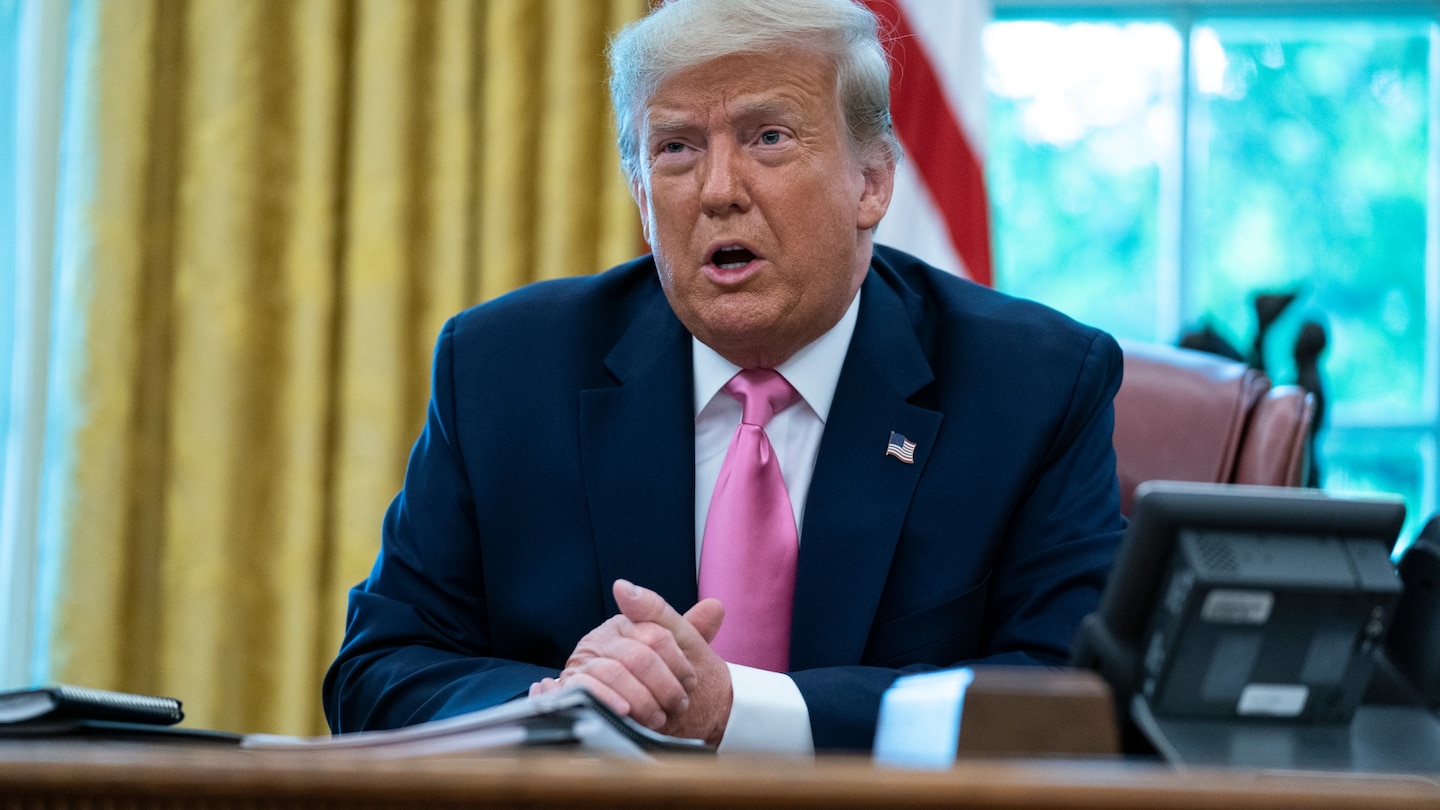When Trump was holding regular briefings, his approval was higher. It wasn’t because of the briefings.

Except that Trump’s approval ratings at the time were higher not because of the briefings but because of his actions — and the downward trend in his approval began as he began to play down the pandemic’s seriousness. What’s more, Americans don’t trust Trump to provide accurate information in the first place.
When Trump announced Monday that the briefings would resume, he led with the metric most important to him personally.
“Well, we had very successful briefings,” he said. “I was doing them and we had a lot of people watching. Record numbers watching. In the history of cable television, there’s never been anything like it.”
This isn’t a new argument. As Americans grew more skeptical of Trump’s handling of the pandemic in early April, Trump continually insisted that they were a success for the above reason. He would repeatedly point to a New York Times article that compared the ratings for his briefings with popular TV shows such as “The Bachelor.” For Trump, any ratings are good ratings — despite the fact that natural disasters get boffo ratings, too.
To be fair, he did argue for the utility of the briefings.
“I think it’s a great way to get information out to the public as to where we are with the vaccines, with the therapeutics and generally speaking, where we are,” Trump added a bit later. But he couldn’t resist throwing in one more bit of support for his main thesis: “A lot of people will be watching and that’s a good thing.”
It wasn’t a good thing when he was doing the briefings earlier this year. Using approval rating averages from RealClearPolitics and FiveThirtyEight, you can see how approval of Trump surged shortly after the briefings began but then began sliding lower.
Why the change? A few reasons.
The first is that the briefings began as the threat of the pandemic emerged. As the public was learning about the threat, the White House was offering information. By mid-March, with the NBA having canceled its season and more cases being reported, Trump and his team announced its support for a two-week effort to contain the virus, advocating that large gatherings be halted and businesses close their doors. At the end of March, that was extended for another month.
It was after that strong step that Trump’s approval on the pandemic hit its high. But by late March, it was clear that Trump’s interest in supporting such efforts had faded. He said at one point that he thought the country could be back to normal by Easter, April 12, with packed churches. It was about that point that his approval began to slip. As he advocated for a quick reopening of businesses and embraced hyperpartisan calls to roll back those restrictions, his approval rating kept trending downward. By the time he infamously suggested that novel coronavirus patients might be treated with disinfectant, his approval on handling the pandemic was about where it had started.
It has only fallen since. As cases began to surge again early last month, approval of his handling of the pandemic kept sliding lower. FiveThirtyEight’s average now has fewer than 4 in 10 Americans viewing his handling of the crisis with approval.
As The Washington Post has reported, views that Trump has done a bad job of handling the pandemic are driving down his national poll numbers in his bid for reelection. It’s clear that the resumption of the briefings is seen by some at the White House — including counselor Kellyanne Conway — as a way to push his approval (and, they hope, those reelection numbers) back up.
Trump’s approval was “much higher when he was out there briefing everybody on a day-by-day basis, just giving people the information,” Conway said in a Fox News interview last week. Which, again, is true — but it’s not necessarily true that the briefings are why his approval ratings were higher.
What’s more, most Americans consider the information that Trump provides fundamentally untrustworthy. Quinnipiac University polling released last week shows that only about a quarter of Americans, most of them Republicans, trust information Trump provides. By contrast, most Americans trust information from the Centers for Disease Control and Prevention or from the country’s leading infectious-disease expert, Anthony S. Fauci.
It is perhaps the case that the White House strategy is to use the briefings as a way to rebuild Trump’s credibility, to burnish his credentials and to associate Trump with new successes such as potential vaccines or treatments. It may be an effort to get ahead of new positive developments and seize ownership of them.
In the briefings’ previous iteration, Trump came prepared with talking points outlining what the administration was doing; if that is what he had to offer, one can see why Conway might feel optimistic about bolstering Trump’s shrunken position. But if the solution necessitates Trump sticking to talking points and fielding probing questions without deviating into damaging asides, it may not work as intended. What Trump is most concerned about, it seems, is getting people to watch. And people are a lot more interested in watching car crashes than smoothly running highways.






